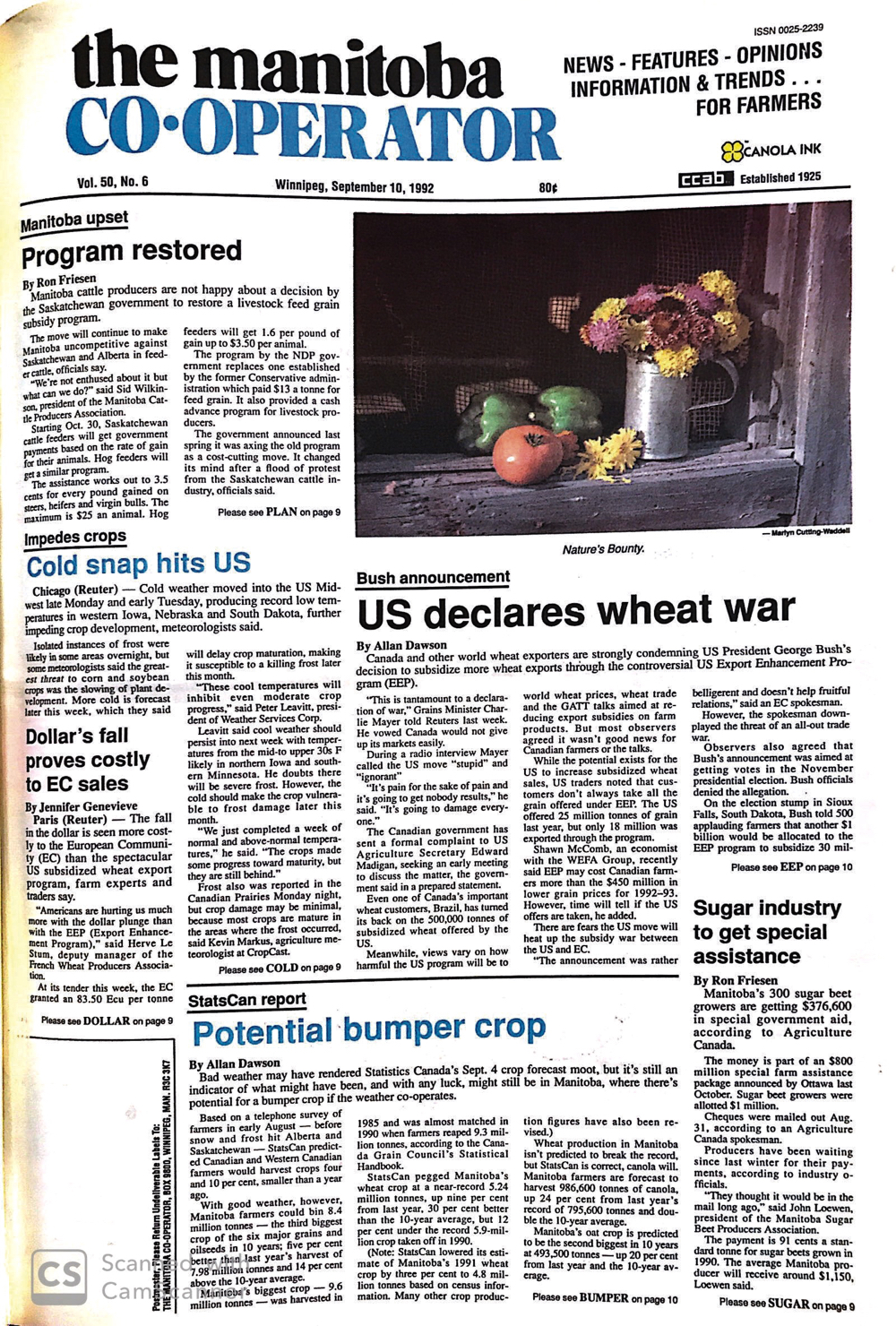As today, high world stocks were weighing on prices in April 2001. The U.S. government had abandoned production controls and storage programs in the 1985 bill, leading to all-out production and a prolonged grain price war. In an attempt to rein in production, some farmers in the U.S. and Canada proposed a voluntary acreage-reduction program called “Focus on Sabbatical,” and information meetings were advertised in our April 5 issue. We’re not aware of how many farmers signed up but there was little indication the program had any effect.
The front-page news that week was that the Federal Court of Canada ruled in favour of Monsanto in its case against Saskatchewan farmer Percy Schmeiser for infringing its patent on Roundup Ready canola. Schmeiser had claimed that the canola on more than 1,000 acres was not deliberately planted but was seed collected from volunteers. The case was later upheld in the Supreme Court. Schmeiser’s battle with Monsanto became known worldwide and he garnered a lot of support from critics of GMO technology. It was also the basis for “Seeds,” a successful stage play which toured to several Canadian theatres.
Read Also

Proposed CWB class action suit takes another step
A class-action lawsuit against the Government of Canada and G3 Canada Limited, alleging millions of dollars of farmers’ money was improperly…
Monsanto was also testing Roundup Ready wheat, which was also in the news that week. A representative of the U.S. Wheat Associates had met with the Canadian Wheat Board, with both agreeing that commercialization of GM wheat should wait until customers would accept it. Monsanto later decided not to proceed with commercialization, partly due to the customer concerns but also because of farmers’ concerns about controlling volunteers.
Livestock producers were concerned about animal and animal-product import controls because the United Kingdom was in the middle of a disastrous outbreak of foot-and-mouth disease. There were 2,026 cases identified, and more than six million cattle and sheep were slaughtered and incinerated to control the spread of the disease.















